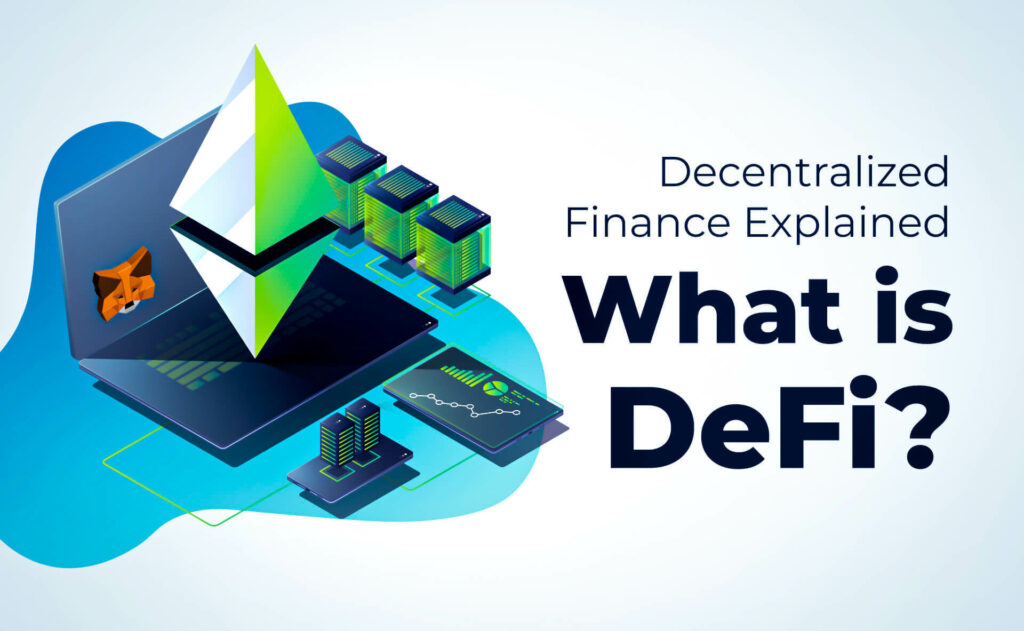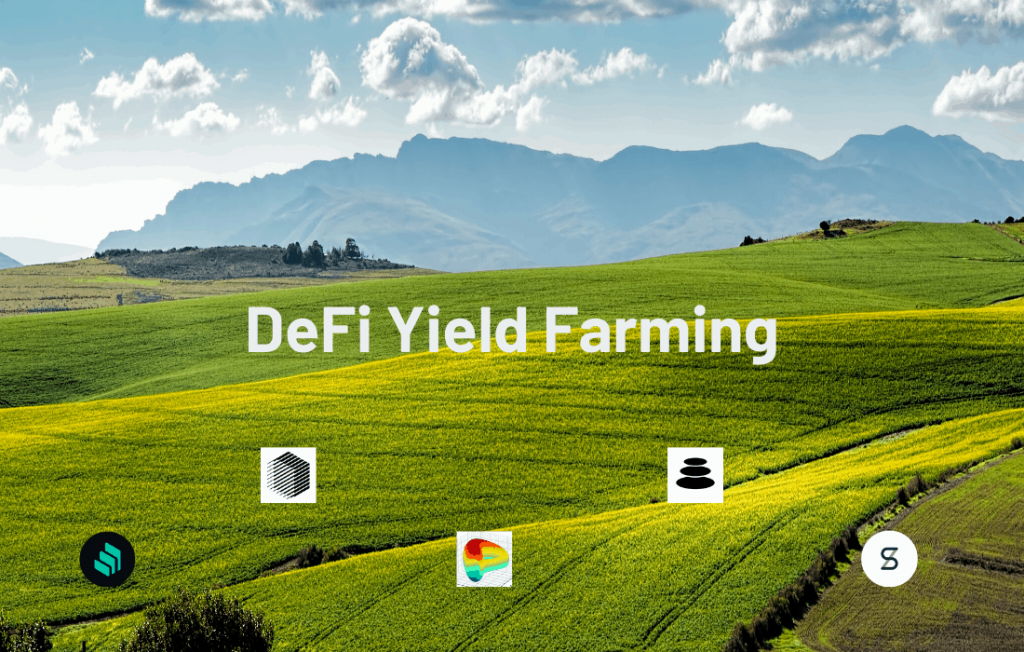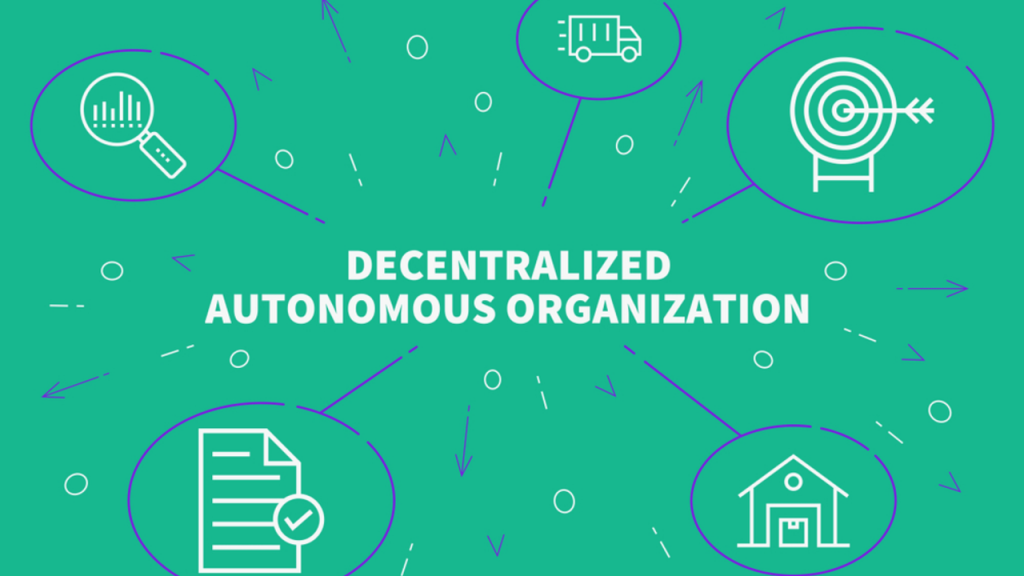It’s been nearly two years since DeFi made its splash in what is called “DeFi summer.” These platforms caught fire in 2020 and are forever improving upon traditional finance models. The latest surge in liquidity-focused projects has brought a new generation of innovation called DeFi 2.0.
One role of this new generation of dApps is to combat the problems of the earlier version of DeFi, which we call DeFi 1.0. For more information regarding decentralized applications, make sure to read our article called “What are dApps?“.
But before delving into DeFi 2.0’s new phase of innovation, let’s look back at its foundation – DeFi 1.0.

DeFi 1.0 – Early Developments
The first pioneers in DeFi had names such as Aave, Compound, MakerDAO, and Uniswap. These first “goers” laid the groundwork for the new DeFi economy. MakerDAO created a stablecoin so that traders could have something solid to hang onto when conducting transactions in this otherwise volatile marketplace.
Uniswap, on the other hand, offered a decentralized exchange where traders could swap tokens without going through the rigmarole of filling out cumbersome KYC and AML documents.
DeFi 1.0 – Global Financial Services for All
DeFi sprang into action as a way to provide decentralized financial services to anyone. The only requirement was a crypto wallet. It offered the three primitives associated with traditional financial markets: stable currencies (such as DAI), borrowing and lending services, and dependable exchanges. On top of that, DeFi offered greater transparency and user control.
The essential feature came with the name – decentralization. With DeFi, individuals could access a plethora of financial services in a global marketplace without the intrusion of costly intermediaries or central authority figures qualifying them.
Get the latest information on DeFi by taking the Master DeFi in 2022 course at Moralis Academy!
DeFi 1.0 – Liquidity Pools
Another successful feature DeFi introduced was liquidity pools. Using DeFi protocols, liquidity providers could stake pairs of tokens in these pools and earn rewards. However, the problem of impermanent loss soon reared its head and has continued to be a looming danger for any trader.
Impermanent loss can occur when the price ratio of a token changes. It’s called “impermanent” because if the price ratio swings back into equilibrium, the loss disappears.

DeFi 1.0 Problems
Other problems surfaced with the fledgling ecosystem. Let’s take a brief look at some of these issues.
1. UX – Complexity
Early DeFi protocols proved challenging to navigate, even for experienced crypto natives. Unfortunately, user interfaces on many dApps complicate the UX making it tough on the average person. To capture more of the mainstream market, DeFi must simplify its UX.
With its goal to democratize finance, improvements on the UX front can win and turn more people away from the traditional financial system that can’t or won’t serve them as efficiently.
2. Scalability
Most DeFi applications exist on Ethereum. Further, as DeFi became more popular, so did Ethereum. Thus, higher levels of traffic meant more network congestion and escalating transaction fees. The high costs of using the Ethereum blockchain, especially during manic trading phases, converted the DeFi ecosystem into a whale’s playground. On the other hand, average traders could not participate because of exorbitant transaction fees.
3. Centralization
Protocols will need to remain steadfast in their commitment to decentralization to remain part of the DeFi 2.0 conversation.
4. Security
Hacks still plague the DeFi sector, with millions of dollars siphoned off through leaky smart contracts. The overwhelming demand backlogs companies offering security audits. However, even audited contracts are not bulletproof. If proper procedures are not in place to account for updates, exploits can still occur.
5. Liquidity
Liquidity pools can lead to capital inefficiency in many instances. For one thing, slippage can result from inadequate liquidity that negatively impacts the liquidity providers’ funds.
Automated market makers (AMMs) can attract large amounts of total value locked (TVL) equity. Unfortunately, due to their design, AMMs don’t use the majority of it. Furthermore, users who provide liquidity to aggregator protocols for aggregator tokens find these tokens unusable outside the origin protocol.

The Yield Farming Solution
The solution to DeFi’s liquidity problem has been to entice more capital flow by offering opportunities to earn yield. Yield farming projects get liquidity from their user base instead of traditional methods such as outside VC funding.
DeFi 1.0 protocols looking to bootstrap liquidity could offer liquidity provider (LP) tokens. So, liquidity providers could lock up funds on a token pair and receive LP tokens in return. Next, they could stake their LP tokens to receive native project tokens.
Thanks to yield farming, new DeFi ventures had a way to attract liquidity without suffering the usual major slippage issues. Hence, the number of DeFi platforms grew exponentially in version 1.0.
Many DeFi projects had to initiate yield farming to secure liquidity to remain solvent. However, projects must still be wary of how long-term yield farming affects their token supply to avoid negative consequences.
Yield Farming – Long-Term Issues
Yield farming proved effective. But it came with long-term risks that it could not solve alone. Furthermore, because people in crypto have such short attention spans, they’ll quickly abandon a protocol for higher yield.
If the whole ecosystem becomes unappealing in its yield offerings, they’re likely to entirely move their capital to greener pastures. In turn, DeFi degenerates might move their money to NFTs, metaverse projects, or the top games in GameFi. See our “What are NFTs?” and “What is Metaverse?” articles for more info.
More importantly, yields overall are not as appealing as they were in the early days of DeFi 1.0. This circumstance has led to unsavory practices such as “farm and dump.” All in all, bootstrapping liquidity in DeFi 1.0 results in inefficient asset use.
Most of DeFi’s innovation takes place on Ethereum, not Bitcoin. If you want more information on Bitcoin, please check out the Moralis blog. Or, follow the link to have Bitcoin ETF explained.
Enter DeFi 2.0
DeFi 1.0 struggles with numerous liquidity issues such as impermanent loss, inefficient capital allocation, and yield farming’s long-term consequences. In addition, it also has problems with centralization, scalability, security, and UX. However, DeFi 2.0 and its next generation of dApps will hopefully solve these problems.
New DeFi Projects – Dealing with Impermanent Loss
Protocols in DeFi 2.0 can provide insurance against impermanent loss to remove investor trepidation.
New DeFi Projects – Scalability
Some new DeFi projects are already operating across different networks, such as Binance Smart Chain, Ethereum, and Solana. When transaction fees became too high on Ethereum, users’ “cash flowed” to these other blockchains.
While these other blockchains obtained new migrants during periods of high gas fees on Ethereum, with DeFi 2.0, we see protocols such as dYdX, SNX, and Uniswap staying on Ethereum but moving to layer-2 solutions. Furthermore, dYdX is going with StarkWare, while SNX and Uniswap are working with Optimistic Ethereum.

Nonetheless, Ethereum still retains the most number of DeFi projects. To learn about Ethereum at a deeper level, take the Ethereum Fundamentals course at Moralis Academy.
New DeFi Projects – Liquidity
Due to some yield farming negatives, the sector is moving towards securing long-term liquidity. DeFi 2.0 is not about solely attracting hit-and-run farmers with short-term “Pavlovian” responses to incentives.
OlympusDao is one such platform. It’s building a decentralized reserve currency while its tool Olympus Pro lets other protocols use its bonding mechanism to increase liquidity.
This project is also designing initiatives that should help trigger a new wave of capital efficiency. The goal is to use deposited assets to their full potential, thus increasing long-term liquidity and reducing unwanted farm and dump scenarios.

DeFi 2.0 – Yield Farming
With DeFi 1.0, users could stake a token pair in a liquidity pool and get LP tokens. They could then yield farm these LP tokens to compound profits. But that’s as far as they could go. But DeFi 2.0 protocols take it even farther.
Different projects have different offerings, but the idea is to put the LP tokens to work at an even greater capacity. Some platforms let users yield farm their LP tokens as loan collateral. This option unlocks extra value while still earning pool rewards and generating annual percentage yield.
New DeFi Projects – Impermanent Loss Insurance
The risk of impermanent loss has been the bane of liquidity providers throughout the DeFi 1.0 ecosystem. However, protocols in DeFi 2.0 are finding new ways to mitigate the risk. One way is to add the protocol’s native token to the LP equation.
Protocols can build an insurance fund to secure deposits against impermanent loss by using swap fees between respective pairs. When losses exceed the funds, the protocol can mint more tokens. When there is an excess number of tokens, the protocol stores or burns them. This solution illustrates how DeFi 2.0 is evolving to overcome past issues.
New DeFi Projects – Borrowing and Lending
Traditional loans involve interest payments and carry some liquidation risk. DeFi 2.0, however, seeks to move on from this old paradigm.
DeFi 2.0 – Self Repaying Loans
For one thing, why can’t users take out loans that repay themselves? It’s a novel concept, but it works like this: the self-repaying loans use the generated interest to pay off the loan, so the borrower does not have to make interest payments.
Let’s say a lender is willing to loan $1,000 in cryptocurrency and requires a $500 deposit as collateral. After making the deposit, the lender immediately puts it to work to earn interest. After the interest accumulates up to the $1,000 mark plus a premium, the lender returns the $500 to the borrower.
This type of borrowing scenario removes liquidation worries. Furthermore, if the deposited collateral loses value, it only means that the borrower will take longer to pay off the loan. That’s a far better outcome than liquidation.

DeFi 2.0 – Smart Contract Insurance
Unless someone has experience as a blockchain developer, it will be hard to conduct due diligence on a protocol’s smart contracts. However, this lack of knowledge can prove financially lethal for the naive investor. Particularly when putting funds to work in a new, untested platform.
As we’ve seen over the short history of DeFi, sometimes investors do get their money back and sometimes not after a hack. It’s a risky space. With DeFi 2.0, however, users can take out insurance on specific smart contracts for a fee.
Smart contract insurance is similar to traditional insurance in one sense, at least. One needs to read the fine print. Coverage exceptions exist based on whether a specific smart contract gets hacked or a liquidity pool contract gets hacked. Nevertheless, insurance can be a good option for protecting particular contracts.
New DeFi Projects – DAOs and Decentralization

Another growing trend in new DeFi projects is DAO governance. We see more protocols using their native token for governance, giving voting rights to its holders. In DeFi 2.0, the community gets to make the decisions, and members become stakeholders rather than passive users.
Moreover, there’s a new wave of tools to help DAOs compete with companies as DeFi 2.0 focuses on B2B. However, people will need to move cautiously with these programs because regulators are taking more than a casual interest in DAO projects.
New DeFi Projects – DeFi 2.0 Risks
Despite its advances, DeFi 2.0 still shares some of the risks of its predecessor.
1. Hacks
Additional security audits are a plus; further, the ecosystem is hardening as a whole. But the space still has plenty of risks. Smart contract insurance notwithstanding, one should be careful of “aping” into a particular protocol.
2. Regulators
Governments are not just going to sit back and watch billions of dollars move between traders and decentralized exchanges without trying to get a cut. Regulators are taking a keener interest in DeFi. So for serious investors, keeping up with new regulations and taxes from their countries of origin will become more important with looming regulations.

DeFi 2.0 – Conclusion
DeFi still struggles with shortcomings holding it back from sustainability. The good news is that the early generation of DeFi projects paved the way for the next wave of dApps. DeFi 2.0 began when project teams used their insight into the DeFi 1.0 limitations to champion the innovations we see happening today.
DeFi 2.0 signals progress, and if nothing else, a decisive move away from the initial bootstrapping phase that was DeFi version 1.0. Moreover, it is a complex topic. But at the end of the rainbow, these new and improved platforms will help onboard more individuals and businesses to DeFi. That is always a good thing.
Even with downturns in the crypto market, blockchain developers are still in high demand. Moreover, the best time to focus on building things is when the market cools off. So, whether you’re interested in working in DeFi or another sector in crypto, you can learn to become a blockchain developer starting today at Moralis Academy!




